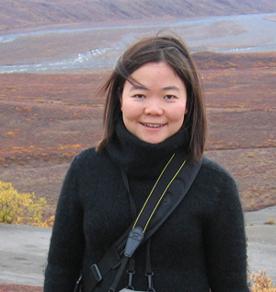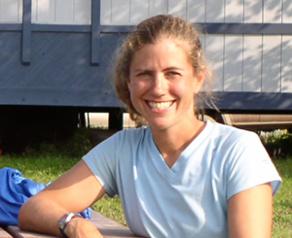2005 & 2006
2006: Yiming Wang
Late Quaternary climate dynamics inferred from the stable oxygen isotope composition of aquatic insects (Chironomidae: Diptera) from Idavain Lake, Southwest Alaska

Yiming's doctoral research reconstructs past temperatures using stable oxygen isotope analyses of aquatic insect (Chironomidae: Diptera) chitin and aquatic cellulose preserved in lake sediment core (ca. 14,000 yr. B.P. to present) from Idavain Lake in southwest Alaska, eastern Beringia. By using the stable oxygen isotope record (δ18O) of chironomid headcapsules preserved in lake sediments, this project will further develop and apply a relatively novel temperature proxy which could extend the record of temperature changes in high latitudes beyond the instrumental record.
This research will contribute to an enhanced understanding of paleoenvironmental changes in southwest Alaska using a newly developed proxy--stable oxygen isotope analysis on chironomid chitin in concert with other existing paleoenvironmental proxy data, such as pollen, stable nigrogen and carbon anlyses of sediments and opal concentrations.
2005: Amy Breen Carroll
Trees in the tundra: An investigation of the origin of Arctic balsam poplar populations

Balsam poplar occurs in isolated stands on the otherwise treeless northern slopes of the Brooks Range. Why? Amy Breen Carroll is addressing this question by studying the ecology, evolution, and population genetics of these unique plant communities. Two competing hypotheses may explain the presence of these stands: 1) the trees are recent migrants following deglaciation, or 2) the trees survived in the north in a non-glaciated refugium through the last ice age. This refugium, referred to as Beringia, extended from the Yukon Territory in the east to northeastern Russia in the west. Although the role of Beringia as an ice-age refugium for arctic herbs and shrubs has long been accepted, it is unclear whether this region also served as a refugium for boreal trees and shrubs through the last glacial maximum.
Her dissertation research addresses the hypothesis that a plant refugium, dominated by balsam poplar, existed within the ice-age Beringian landscape. Macrofossil and pollen evidence indicate balsam poplar is the best boreal tree candidate species for survival during the last glaciation. To date, preliminary results from an investigation of the genetics of adaptation to climate across a latitudinal transect in balsam poplar show Alaskan populations are distinct. The presence of unique genotypes in Alaskan populations, as compared to those at the southern end of its range in the central Canada , suggests balsam poplar indeed has a long history within both arctic and boreal Alaska.
This research is supported by the Alaska EPSCoR program, in addition to the Alaska Quaternary Center 's David and Rachel Hopkins Fellowship. Hopkins was an imaginative and multi-talented Quaternary geologist and former UAF professor. He was also intrigued by these far northern stands of balsam poplar and was among the first to hypothesize they may have survived the last glaciation. Amy Carroll is the first recipient of the fellowship; her project exemplifies the kind of research that Hopkins supported throughout his 50-year career.



